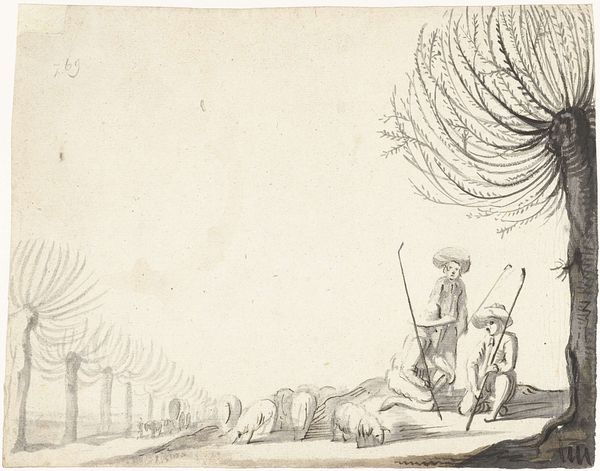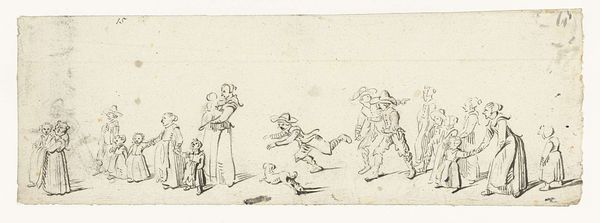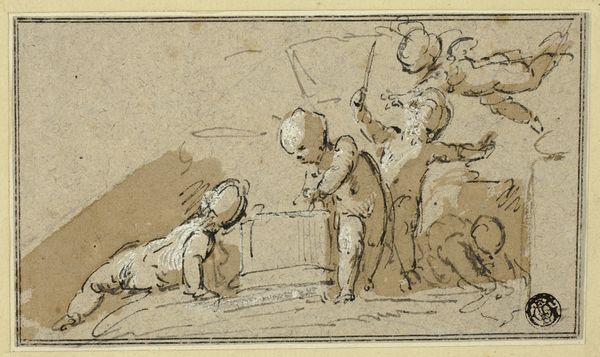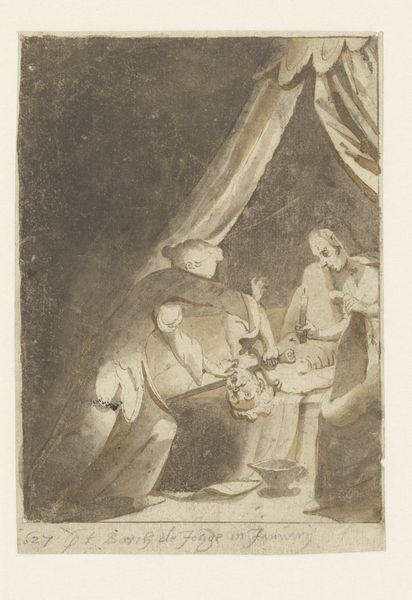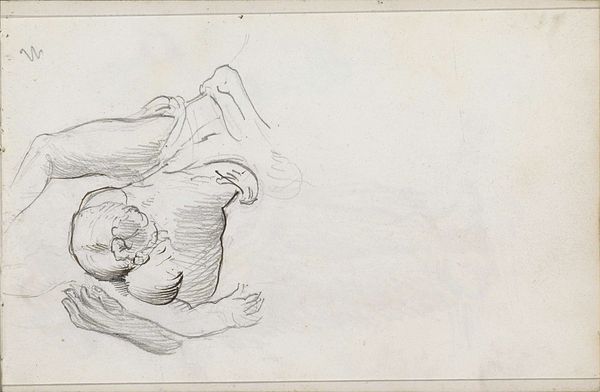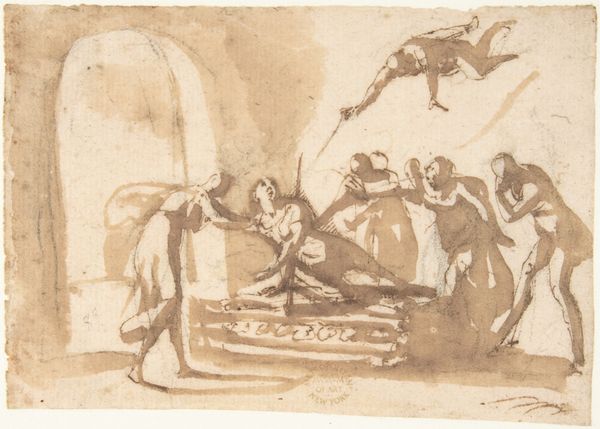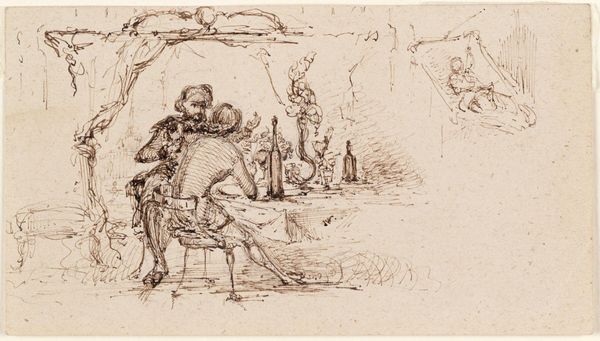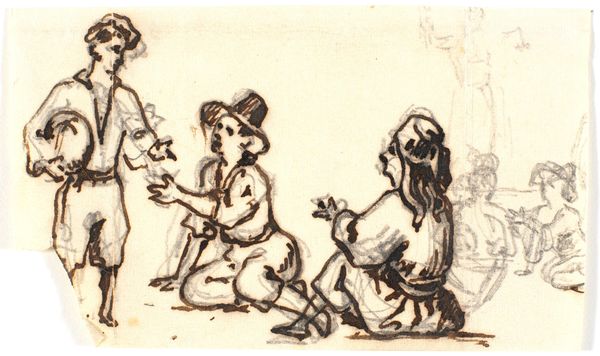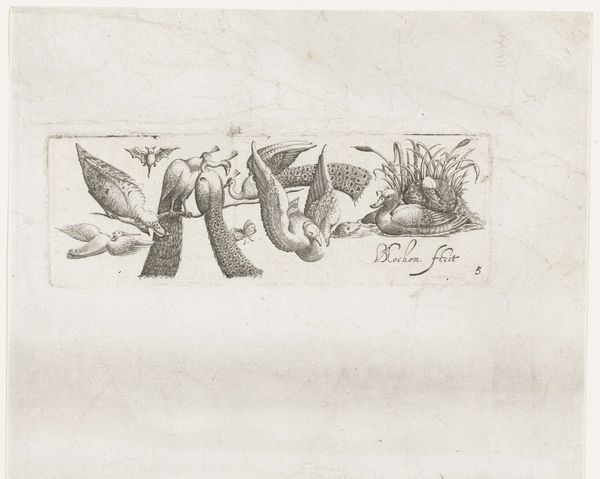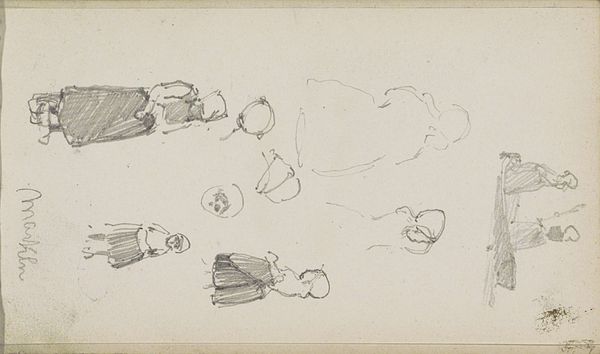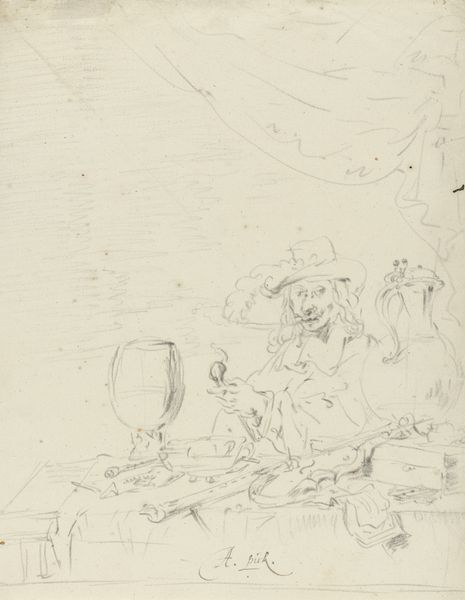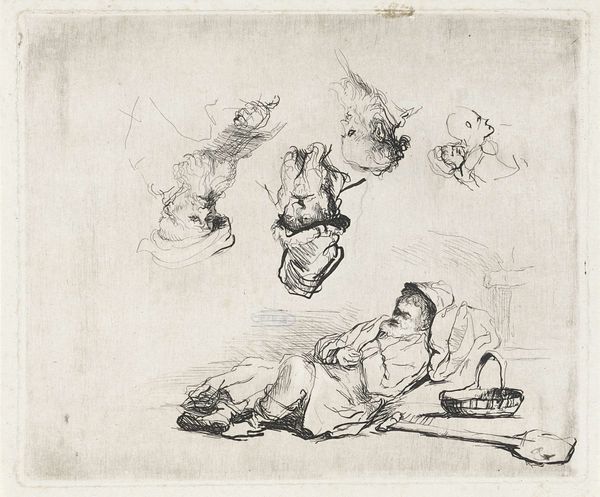
drawing, paper, ink
#
drawing
#
narrative-art
#
dutch-golden-age
#
figuration
#
paper
#
ink
#
genre-painting
Dimensions: height 52 mm, width 80 mm
Copyright: Rijks Museum: Open Domain
Curator: Looking at this ink drawing on paper from around 1651, titled "Two Women Pushing a Sled with Two Children" by Harmen ter Borch, it strikes me as a delicate snapshot of daily life. What are your initial thoughts? Editor: It evokes a sense of gentle labor. The lines are so economical, but they capture movement and weariness. There is an undeniable tension between caregiving and class in this tableau. Curator: Indeed. Ter Borch, though known for portraiture of the wealthy, often sketched everyday scenes like this one. It speaks volumes about the lives of ordinary women in the Dutch Golden Age. Were they merely the subject, or something more? Editor: This resonates on many levels. Two women shoulder the weight – literally pushing forward not just a sled, but, through this simple scene, pushing at boundaries of women’s labor. The implications speak volumes on the silent contributions, unacknowledged, often invisible within societal structures. Are their faces blurred to make a generalized Everywoman, pushing back against the grain? Curator: And how does the artist employ such sparse strokes of ink to convey so much? He uses light and shadow so deftly. But is this meant as a realistic view of women labor, or just a scene of Dutch life with women merely functioning as carriers and caregivers? Editor: It invites a contemporary reinterpretation. The artist’s time may look at that task with benign interest, but through a different lens we can explore how female solidarity functions as resilience to precarity. The two figures pushing and pulling as active agents, and the image suddenly becomes something profoundly different from a genre drawing of its time. Curator: Absolutely, thinking about that question from today’s social and political landscape reveals hidden messages that compel new and fresh readings. This type of piece might spark meaningful dialogue and debates among the observers of how Dutch art, and indeed, how art period, functions to convey more complex perspectives to society. Editor: Thank you for that historical reading that opens to contemporary consideration! It enriches and complicates, and even invites us to engage.
Comments
No comments
Be the first to comment and join the conversation on the ultimate creative platform.
